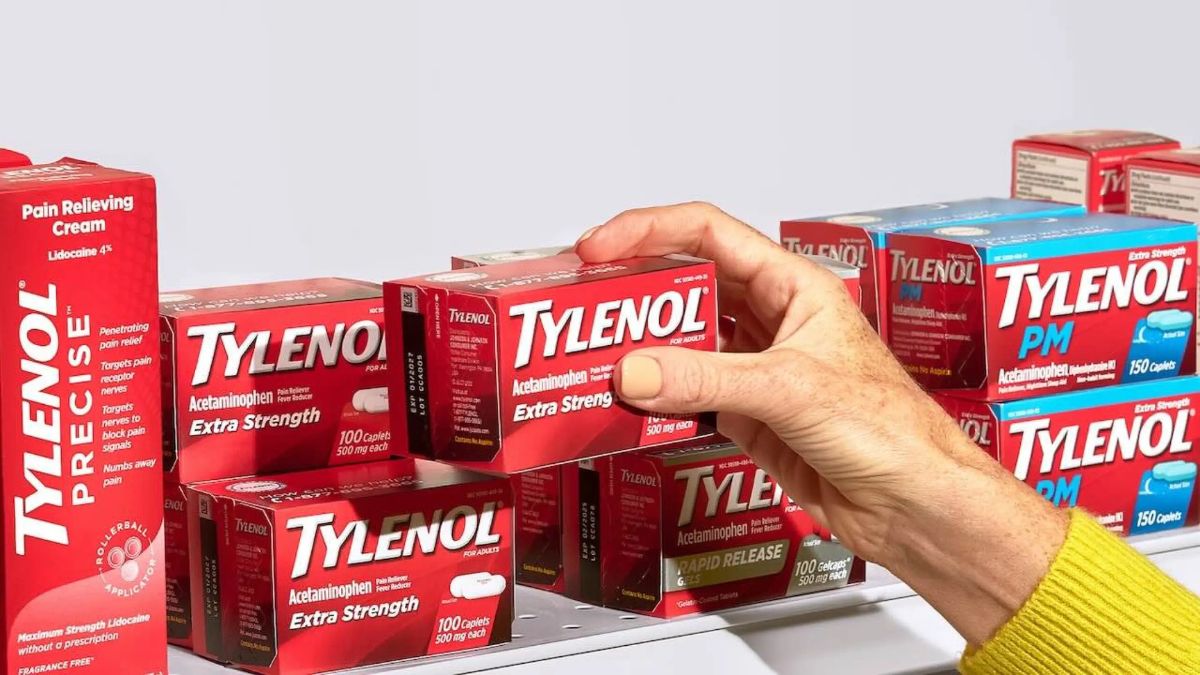When headlines raise the question—“Does Tylenol (acetaminophen) in pregnancy cause autism?”—it’s easy to feel anxious. Let’s step back and rethink this carefully.
Here’s what you’ll learn in this article:
- What the main studies actually show.
- Why correlation does not equal causation.
- A biologically plausible—but unproven—mechanism for why chronic, not occasional, use might increase vulnerability.
- Practical, holistic ways to support detox pathways in pregnancy.

1) What the Headline Studies Say (and Don’t)
Cord-blood biomarker study (NIH/JHU cohort).
Researchers measured acetaminophen metabolites in umbilical cord plasma. Babies with higher levels showed a stronger likelihood of later ADHD or autism diagnoses, in a dose-response style. That’s an association, not proof of causation .
Large Swedish sibling study (2.5 million pregnancies).
When comparing siblings—one exposed, one not—the link to autism/ADHD vanished. Sibling comparisons are among the best tools we have to separate drug effects from family/genetic factors .
Consensus statements.
In 2021, a multidisciplinary group urged caution: use the lowest effective dose, avoid long-term use without medical need. The American College of Obstetricians and Gynecologists (ACOG) responded: short-term acetaminophen remains one of the safest options in pregnancy, and no direct causal link has been proven .
Current context.
After recent political statements, WHO and European regulators reiterated: evidence of a link with autism remains inconsistent, and acetaminophen is still considered acceptable in pregnancy at the lowest effective dose .
👉 Takeaway: Some associations exist, but the best causal evidence (sibling-controlled study) does not support Tylenol as a direct cause of autism.
2) Correlation ≠ Causation
Why is this area so tricky?
- Confounding by indication. Moms take Tylenol for fever, pain, infection—all of which can themselves influence neurodevelopmental risk. Unless studies perfectly control for these, the drug may look guilty when it isn’t .
- Measurement error. Many studies rely on self-report (imperfect recall). Biomarker studies are stronger, but still can’t prove causation .
- Scientific consensus. Even the 2021 “call for caution” emphasized uncertainty. It asked for minimized, indicated use—not elimination .
3) A Possible Holistic Mechanism for Neurological Injury from Chronic Use
Think of your detox system like a budget.
Glucuronidation and sulfation—your body’s Phase II detox team
Your liver works like a processing plant. When chemicals, hormones, or medications enter the body, they often need to be “tagged” so they can be safely escorted out.
- Glucuronidation attaches a glucuronic acid tag to substances. This makes them more water-soluble so your kidneys or bile can flush them away. It handles things like bilirubin, certain hormones, and medications—including Tylenol.
- Sulfation works similarly, adding a sulfate group instead of glucuronic acid. It helps process neurotransmitters (like dopamine), hormones, and toxins.
Both systems are like checkout lines at the grocery store: the faster they work, the more efficiently your body can move chemicals out. But they each have limited “lanes”—too much demand at once can cause a traffic jam.
How Tylenol is cleared, in plain language
Your body sends most of the Tylenol through those two checkout lines (glucuronidation and sulfation), where it’s packaged and safely excreted. But a small fraction takes a detour and turns into a toxic byproduct called NAPQI. Normally, your body uses its main antioxidant, glutathione (GSH), to neutralize NAPQI before it causes trouble.
Here’s the catch: if you’re taking Tylenol frequently or in higher amounts, your body has to keep dipping into its glutathione “savings account” again and again. Eventually that account can run low, leaving less glutathione available for other important jobs—like protecting your cells from pollutants, heavy metals, or oxidative stress.
👉 Translation: Chronic use could lower detox “reserves,” increasing sensitivity to other toxic exposures in pregnancy. This is a biologically plausible explanation to explain why a baby may be more vulnerable in an increasingly toxic world. Remember: according to research from the EWG, there are over 230 chemicals commonly found in newborn umbilical cord blood. These include heavy metals, forever chemicals, pesticides and plastics. If you make a baby more vulnerable to these, it is highly likely to result in injury.
4) Practical Guidance (Not Medical Advice)
Always defer to your OB, but here’s what you can keep in mind:
- Occasional, indicated use at the lowest effective dose remains supported by ACOG .
- Don’t ignore fever—fever itself can be harmful in pregnancy. Work out a plan with your provider.
- Support your detox budget:
- Prioritize sleep and hydration.
- Eat protein-rich foods (cysteine donors).
- Include crucifers and alliums (sulfur donors).
- Load up on colorful, antioxidant-rich plants.
- Discuss NAC glutathione or other supplements with your provider.
6) Closing Thoughts
This isn’t about fear—it’s about precision and prevention. Some studies suggest a connection, but the strongest designs do not support Tylenol as a DIRECT causal factor in autism. Still, chronic use could theoretically strain detox pathways by depleting glutathione and sulfation capacity making mother and baby more vulnerable to other toxic insults.
My advice: RETHINK routine, chronic use, work with your OB, and keep your body’s detox budget strong through sleep, nutrition, and antioxidant support.
